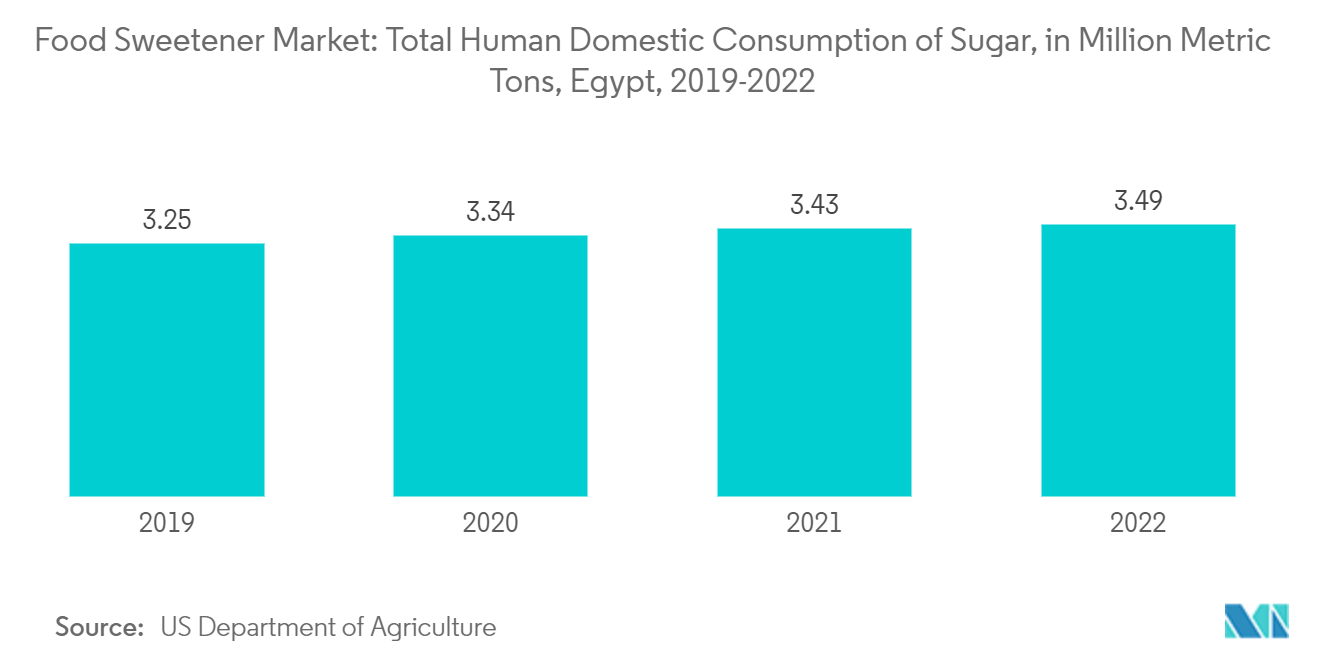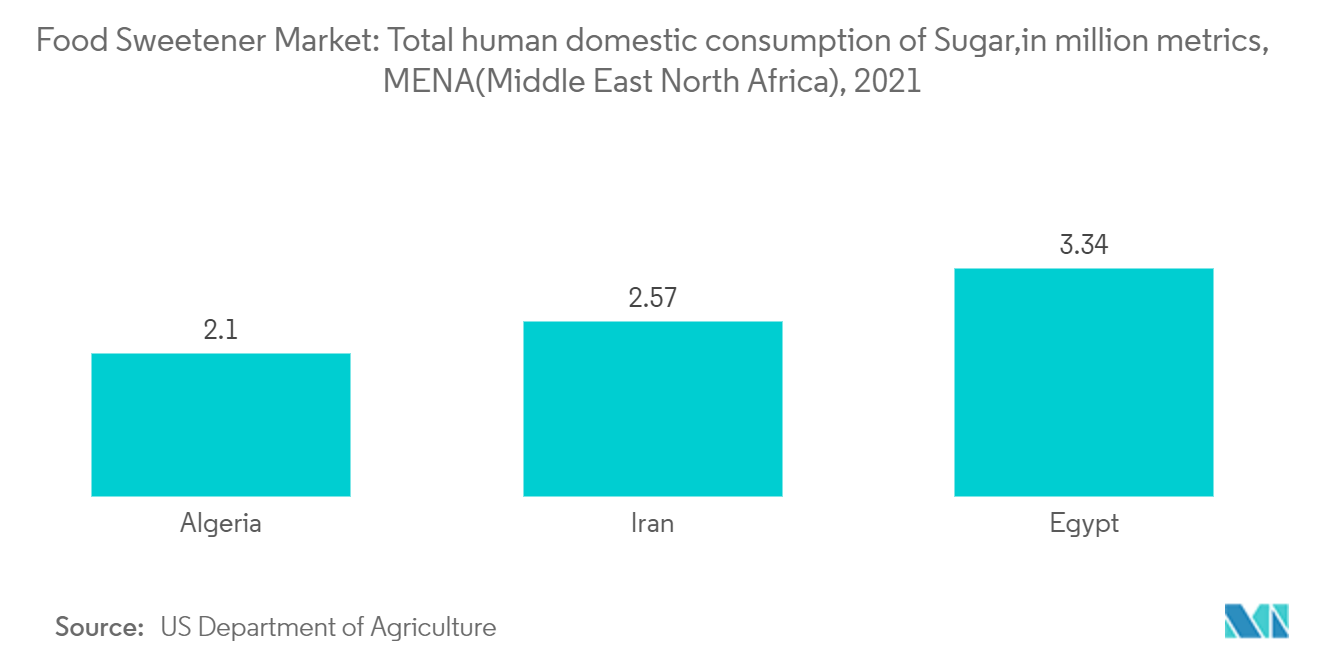Market Trends of Egypt Food Sweetener Industry
Increasing Demand for High-intensity Sweeteners (HIS) in the Country
The majority of countries with high absolute consumption of sugar falls in the emerging economies category, and consequently, these nations have a high burden of lifestyle diseases, as pointed out by the World Health Organization (WHO). The consumption of high-intensity sweeteners in Egypt is significantly higher than other nations in the region. However, the demand in developing economies, such as Egypt, is expected to increase during the forecast period. Overall, the huge demand for food has led the entire value chain in developing countries to open markets for food sweeteners and new introductions from foreign players, driving the demand for food sweeteners.

Growing Demand for Sweeteners in Various Applications
There is an exponential Y-o-Y increase in the number of processed low-calorie and diet foods low-calorie that contain artificial sweeteners. By using different blends of low-calorie sweeteners, subtle taste options can be achieved. Manufacturers choose which low-calorie sweetener to use, either on its own or as a blend, based on taste considerations, stability, and cost. Bakery and confectionery, beverages, and dairy food contribute a major share of sweeteners in food processing. Natural-based sweeteners, such as stevia, are being used in food processing as a substitute for high-intensity sugars to attract consumers in the market. Many sweetener categories like polyols or natural caloric sweeteners are approved for use due to their long history of use, and thus, many such sweetener systems are allotted Generally Regarded As Safe (GRAS) status. Hence, the incorporation of different types of sweeteners in the food and beverage industry is expected to increase in the coming years in Egypt.


